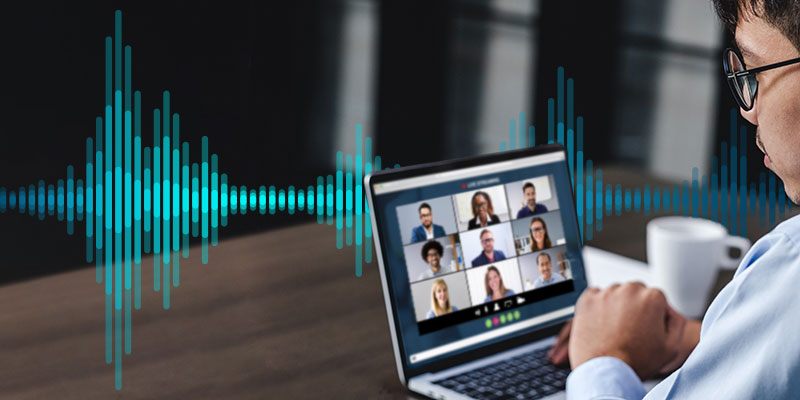Find the latest news from the Office of Accessibility. Once a month we will bring you tips, articles, and ways to learn more about digital accessibility. Want an easier way to stay informed? Subscribe to the Accessibility Newsletter!
An inclusive way to communicate
10/22/2020 9:00:00 AM

By David Andrews, Chief Technology Officer for State Services for the Blind
During the COVID-19 pandemic, many of us are working from home and using video conferencing and collaboration platforms like Microsoft Teams, Skype for Business, Zoom, Webex and more, on a regular basis.
When we started down this road, there was much ink devoted to the topic of being aware of your visual background, changing your background, how to look like you are in front of the Golden Gate Bridge, and related topics. There were also numerous articles on how to prepare your background and video for job interviews and other important meetings.
While I think this is important, I also think people should devote the same care and attention to their audio. I keep my video on even though, as a blind person, I don’t benefit from it. I understand that it can be helpful for some meeting attendees and that nonverbal communication is very powerful. However, if you analyze most of the meetings you are in, you will realize that a lot of important information is shared through speaking. I hope to raise your awareness of the importance of audio and offer a few pointers along the way.
Our ears are very good at filtering out background noise, microphones are not as good at it. Also, there may be volume control and compression software in the computer or conferencing software that brings up background noise during pauses. There may be a radio or TV on in the next room, or animals meowing and barking, and the like. While these things aren’t annoying in person, that can be very distracting when using conferencing software. Consider closing doors and windows and tell your housemates when you’re on a call.
Like your video background you should also think about the audio quality in your room. If it is uncarpeted, mostly empty, or large, you may sound like you are in a barrel when you talk. In general, closer to the mic is better. It is also helpful to deaden echoes from around you.
Whenever possible you should use a dedicated headset or earbuds to listen to your meeting and to talk. Wired USB devices are best as they are more reliable, and less prone to interference. Having to make a Bluetooth connection is one more thing to worry about. The best units have their microphone on an arm that you can adjust in relation to your mouth. If possible, any microphone should be positioned to the side of your mouth so you don’t “pop your P’s.” Remember, if it is on the wire of your headphones or earbuds, it is also easy to twist so it is not facing your mouth.
There are many brands and models of headsets and ear buds on the market. Prices range from a few dollars to hundreds of dollars. Better-quality devices will probably cost $25 to $75. Do you research before making a purchase as there may be shortages of a certain product due to high demand.
Finally, people need to be aware of their mute status at all times. All video conferencing and collaboration platforms have some sort of mute control. Some headsets also have controls on the wire or on the earpiece. When you enter a meeting, check your mute status immediately and keep track of it, so you don’t embarrass yourself!
Give your audio as much attention as you give your video – it is that important. Quick tips include:
This will make the meeting better for everyone. It will also help captioners, automatic captioning software and/or sign language interpreters.
Would you like to learn more about the accessibility work being done by Minnesota IT Services and the State of Minnesota? Once a month we will bring you more tips, articles, and ways to learn more about digital accessibility.
Accessibility